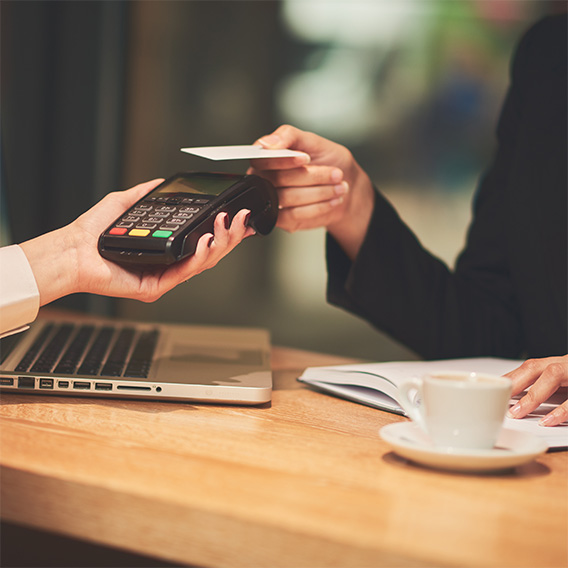Finance
How to Set Up an Envelope Budget With or Without Using Cash
EXPECTED READ TIME:6 minutes
Setting up a budget can feel complicated and time-consuming, but the most effective budgets rely on simplicity. That’s one reason the envelope system has been such a popular budgeting strategy for so long.
With the rise of mobile banking, new technology enables us to adopt a cashless envelope system that’s even easier. Here’s how it works.
What Is the Envelope Budgeting Method?
Traditional envelope budgeting goes by many names — envelope method, envelope system, cash stuffing — but it works like this:
- Create your budget
- Label and stuff your “envelopes”
- Only spend what’s in each “envelope”
Create Your Budget
Start by creating a budget for yourself. Use bank statements, bills, receipts, and even your scheduling tool to capture big expenses (like utilities) and small ones (drinks out with friends) so your numbers are accurate.
Then decide on a budgeting strategy. In this article, we’re all about the envelope method. To learn more about other budgeting strategies, check out our guide to budgeting strategies.
Label and Stuff Your Envelopes
Start by getting some envelopes. You can use fancy budget binders made for envelope budgeting, or you can just use a handful of #10 envelopes. Whatever fits your style. We’ll cover how to do this digitally in the next section.
Once you know your expenses, group them into categories like:
Groceries
Bills
Entertainment
Kid/pet stuff
Home maintenance/furnishings
Label an envelope with the name of each major category. At the beginning of each month, withdraw all the money you’ll need for that month’s expenses. Divide the money into envelopes following the budget you created for yourself.
Once you know your expenses, group them into categories like groceries, bills, and entertainment.
Only Spend What’s in Your Envelopes
Whenever you spend money, use cash from the correct envelope. If you grab lunch with friends, then you’ll need to pay for that out of your envelope for food or entertainment (whichever you decide — just be consistent). Once your envelopes are empty, you must wait until your next paycheck to refill them and start spending again.
Digital Envelope Budgeting
Now for the elephant in the room. If you’re reading this article, chances are you don’t carry cash. Maybe toting around full envelopes of cash and coins sounds messy and outdated in a world where you can pay for groceries with a wave of your smart watch.
Luckily, you can still benefit from the envelope method! Here are five ways to make envelope budgeting without cash work:
- Use pre-paid cards
- Make use of budgeting apps
- Use multiple checking accounts
- Write down expenditures
- Go half-cash, half-digital
1. Use Pre-paid Cards
Purchase a few pre-paid credit cards or gift cards from a local retailer and label them with each of your major budget categories. Then load them up for an easy version of cashless envelope stuffing.
There are lots of free budgeting apps based on the envelope budget method.
2. Make Use of Budgeting Apps
There are lots of free budgeting apps based on the envelope budget method. Many of these sync to your checking account to update automatically, but you can choose one where you record your expenses manually instead, if you’re security conscious.
3. Use Multiple Checking Accounts
Using multiple checking accounts or subaccounts can be an easy way to automate your envelope budgeting. Decide which bills to pay from which account, set up autopay, and you’re ready to manage your money like a pro. Similarly, you can open multiple savings accounts to simplify your savings goals, too.
4. Write Down Expenditures
Before the days of mobile banking, most people used a check register to manage their checking accounts. Check registers are still available from banks and credit unions, but you can also use a small notebook instead — or you can use a spreadsheet on your phone if you want to keep things digital.
5. Go Half-Cash, Half-Digital
Some bills are cheaper and easier to pay online, especially with automated bill pay. One way to take advantage of that is to pay the bills you can online, especially large, recurring bills like internet services or rent. Then use cash for varying or spontaneous expenses like groceries, entertainment, or dining out.
Pay big bills online and use cash for varying or spontaneous expenses like groceries, entertainment, or dining out.
Pros and Cons of Envelope Budgeting
Envelope budgeting is an effective way to save money because it forces you to plan your spending ahead of time. Planning ahead and keeping your limit top of mind helps you curb impulse purchases.
And with envelope budgeting, you know at any moment how much money you have left in your budget and how each additional purchase will impact your finances. That increased awareness helps you take control of your financial life.
Increased awareness helps you take control of your financial life.
But the envelope method has drawbacks, too. Counting cash into envelopes and making trips to the ATM take time. So does opening multiple accounts and/or syncing with budgeting apps.
Envelope budgeting is also strict by nature, so if you want more flexibility in your spending, this may not be for you.
You’ll also miss out on benefits like earnings from interest-bearing checking and savings accounts – whether you use cash or split your funds into multiple accounts.
In the end, if you’re someone who responds well to defined limits, envelope budgeting will work for you. Especially if you have ambitious savings goals or a momentary dip in income from job loss.
Pros and Cons of Envelope Budgeting
Envelope budgeting — with or without actual envelopes — is popular, but is it the right method for you? Check out these pros and cons to decide:
|
Pros of Envelope Budgeting |
Cons of Envelope Budgeting |
|---|---|
|
Plan your spending ahead of time |
Requires some setup |
|
Curb impulse purchases |
Inflexible |
|
Know exactly how much is left in your budget at any moment |
Miss out on earning interest |
Envelope Budgeting for Incomes That Vary
The envelope budgeting method is easily adapted for people who are paid weekly or bi-weekly, day laborers, gig workers, and freelancers. Here are some tips for using the cashless envelope method if your pay is variable:
Divide Your Monthly Expenses by Pay Periods
Some expenses will always be monthly. But if you’re paid weekly or bi-weekly, you may find it easier “pay” these bills more often by setting aside some cash each pay period for those costs. For instance, if your rent is $1,500 per month, you could set aside $375 each week or $750 every two weeks, depending on your pay schedule.
The envelope budgeting method is easily adapted for people who are paid weekly or bi-weekly, day laborers, gig workers, and freelancers.
Create a Sinking Fund
A sinking fund is a savings account set aside for things you pay infrequently. This could be copays for annual medical checkups, annual subscriptions, routine car maintenance, or kid’s athletic fees. This fund is different from an emergency fund because unlike emergencies, this account covers charges you know about and can plan for.
Add up what all these things will cost and divide the total by the amount of time you have to save. Save that amount in your sinking fund monthly. This way, you’re not scrambling to rework your budget every time these need to be paid.
Control the Expenses You Can
Some expenses are set in stone, such as your phone bill. But there are other costs, like utilities and dining out, that you can control to an extent. Keeping these costs low will free up money for weeks when you have more bills due, helping to even out your cash flow.
If you have a variable income, a buffer envelope (or account) will be your best friend
Save Your Change
If you have a variable income, a buffer envelope (or account) will be your best friend. You’ll likely have some change left over at the end of most weeks. Over time, that change can add up, whether you’re tossing it in a coin jar or moving it electronically from one account to another.
Although saving your leftover change won’t make you rich, it can provide that all-important buffer that prevents you from taking on unplanned debt when your income stream is thinner than usual.
The Takeaway
All budgets take time to set up, but the control you gain over your finances — and your life — are worth the effort. Envelope budgeting with or without cash is a great method for beginners and experts alike. Now is a great time to give it a try.
Bank With Confidence
Get access to a checking account built for the way you live.




